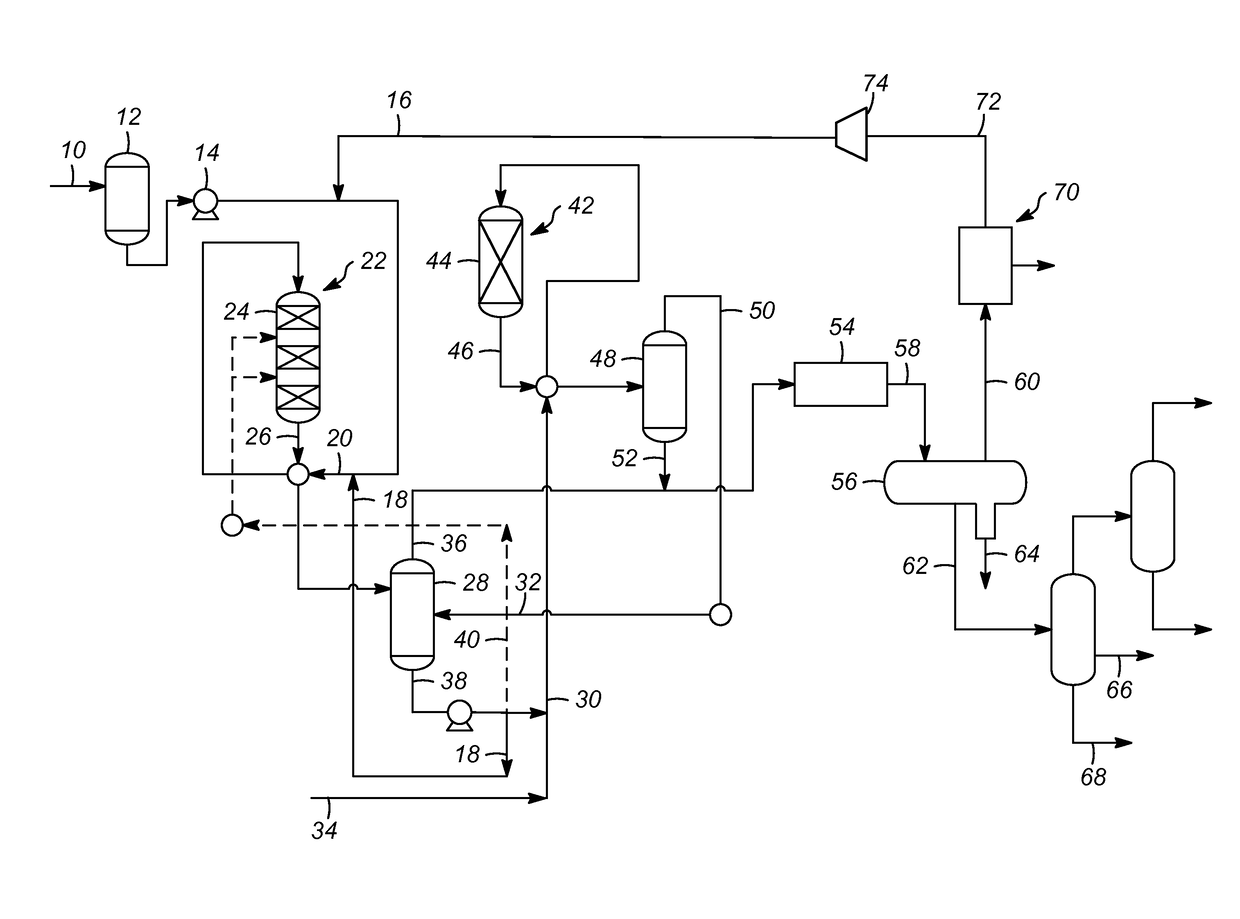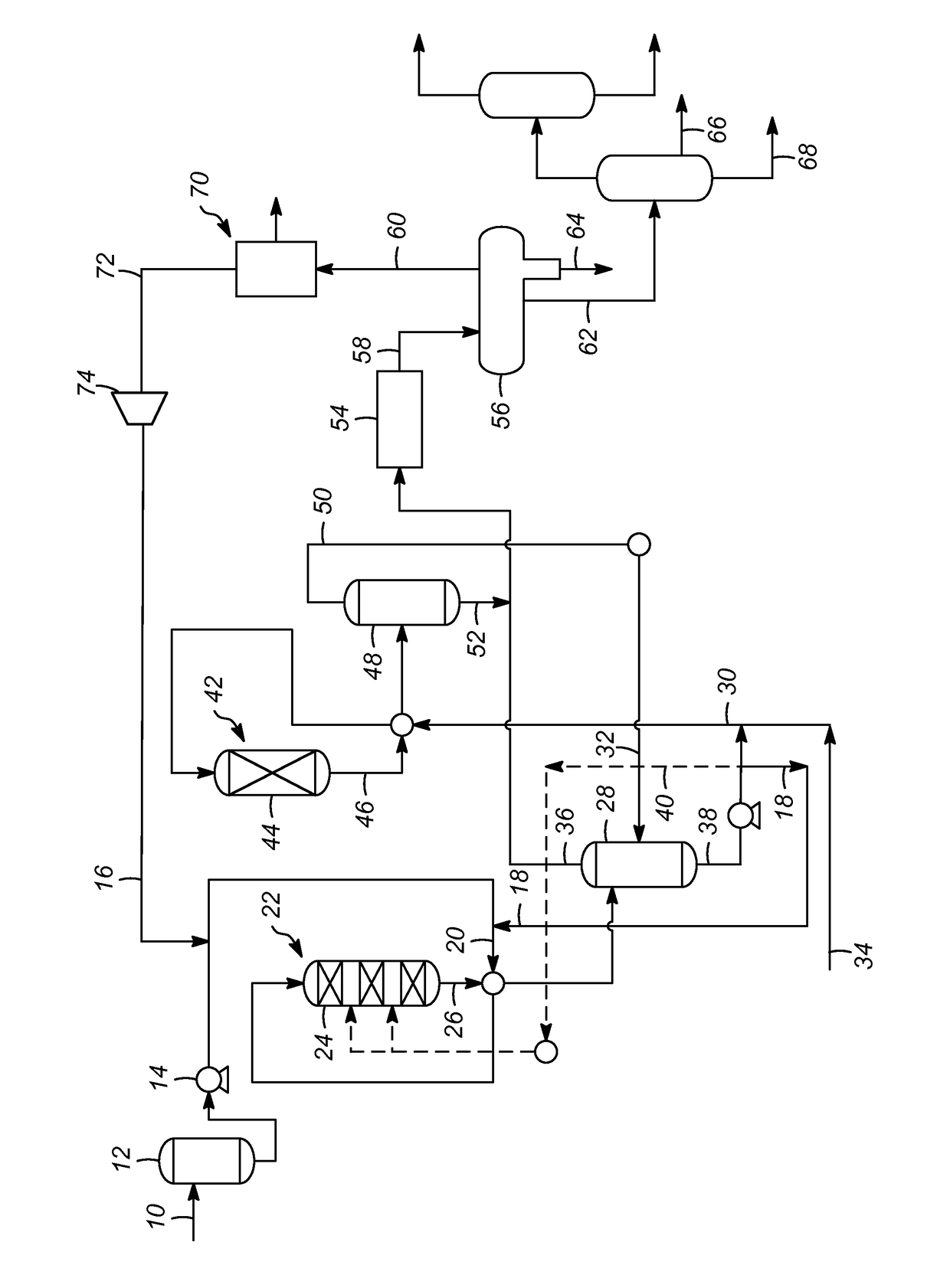Methods for processing nitrogen rich renewable feedstocks
a technology of renewable feedstocks and feedstocks, applied in the field of processing renewable feedstocks, can solve the problems of increasing the cost and cost of processing the cheaper feedstocks, presenting challenges in processing, and being difficult to process in the first stage of deoxygenation, so as to increase the recycle hydrogen gas rate to the deoxygenation zone, effective and efficient conversion
- Summary
- Abstract
- Description
- Claims
- Application Information
AI Technical Summary
Benefits of technology
Problems solved by technology
Method used
Image
Examples
Embodiment Construction
[0023]As mentioned above, it has been discovered that by increasing the rate of the recycle hydrogen gas to the deoxygenation zone, high nitrogen feedstocks may be effectively and efficiently converted. While the prior art has suggested broad ranges for the hydrogen gas rate, the prior art has failed to recognize the impact the hydrogen gas injection rate has for a nitrogen rich feedstock.
[0024]With these general principles in mind, one or more embodiments of the present invention will be described with the understanding that the following description is not intended to be limiting.
[0025]As shown in the FIGURE, one or more processes according to the present invention comprise the processing of a renewable feedstock 10 to produce a hydrocarbon product useful as a diesel or aviation fuel or blending component. The term renewable feedstock 10 is meant to include any of those which comprise glycerides, fatty acid alkyl esters (FAAE), and free fatty acids (FFA). Most of the glycerides wi...
PUM
| Property | Measurement | Unit |
|---|---|---|
| pressure | aaaaa | aaaaa |
| pressure | aaaaa | aaaaa |
| pressure | aaaaa | aaaaa |
Abstract
Description
Claims
Application Information
 Login to View More
Login to View More - R&D
- Intellectual Property
- Life Sciences
- Materials
- Tech Scout
- Unparalleled Data Quality
- Higher Quality Content
- 60% Fewer Hallucinations
Browse by: Latest US Patents, China's latest patents, Technical Efficacy Thesaurus, Application Domain, Technology Topic, Popular Technical Reports.
© 2025 PatSnap. All rights reserved.Legal|Privacy policy|Modern Slavery Act Transparency Statement|Sitemap|About US| Contact US: help@patsnap.com


